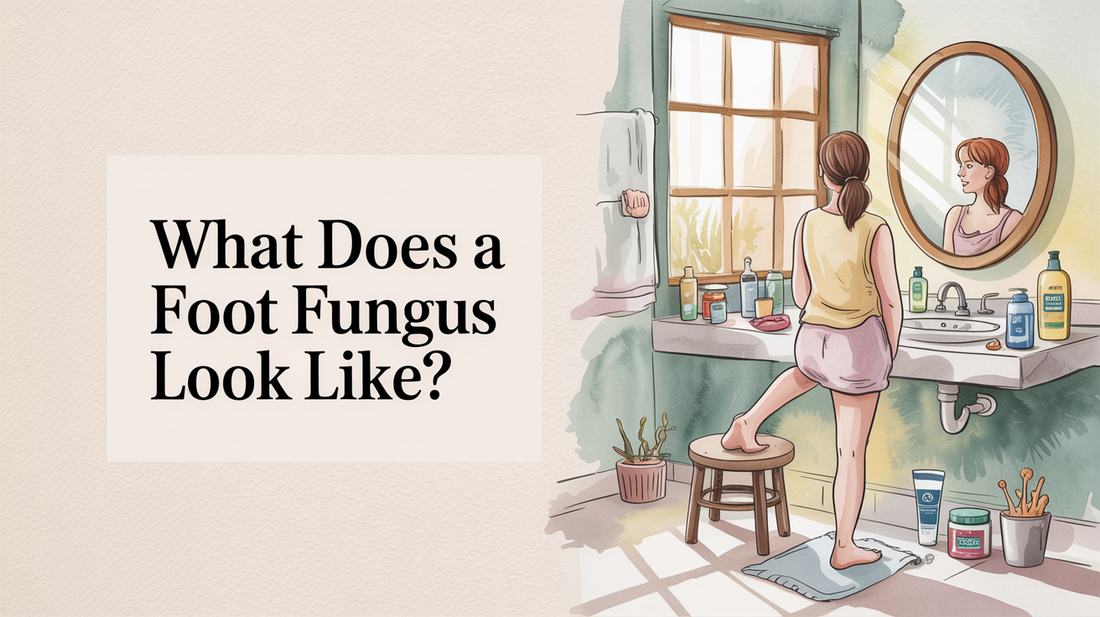What does a foot fungus look like?
tinea pedis visual guide, interdigital peeling, moccasin‑type scaling — Foot fungus can be tricky to identify, but understanding its various forms can help you recognize it early. This guide will explore the visual signs of tinea pedis, including interdigital peeling and moccasin-type scaling, so you can take steps toward care. We’ll break this down into three informative sections to empower you with knowledge and options tonight.
Spotting Patterns by Location 🧭
Foot fungus, also known as tinea pedis, can appear differently based on where it resides on your foot. Recognizing these patterns can be vital in distinguishing fungal infections from other skin conditions, which is essential for effective care. Common locations for foot fungus include:
- Between toes: This is the most prevalent area, featuring white, soggy, and peeling skin, often with cracks or maceration.
- Sole of foot: Dry, scaly patches may develop here, extending up the sides in a characteristic "moccasin" pattern.
- Heel and arch: These areas often show thick and flaky skin, which can be confused with simple dryness or eczema.
- Top of foot: Less frequently, ring-like patches with raised borders and clearer centers may occur.
- Entire foot: In chronic cases, multiple areas can be simultaneously affected, resulting in complex patterns.
Try It Tonight: Calm, Fresh Feet ✨
- Wash feet with warm water and a mild cleanser; make sure to dry thoroughly between your toes.
- Apply a small amount of Kissable Feet where needed; massage gently until absorbed.
- Allow your skin to breathe; consider wearing breathable socks if you prefer. Always patch-test if trying this foot cream for the first time.
Moccasin vs. Toe‑Web vs. Vesicular ✨
Athlete's foot can manifest in several distinct ways, and understanding these types can assist in identifying the appropriate care. The three major classifications include:
- Moccasin-type: This chronic condition features dry scaling across the sole and sides of the feet, resembling a moccasin shoe, and typically shows minimal inflammation.
- Interdigital (toe-web): The most common form, characterized by white, macerated, and peeling skin between the toes, particularly between the 4th and 5th digits.
- Vesicular (inflammatory): An acute form marked by fluid-filled blisters on the arch or ball of the foot, often accompanied by itchiness and discomfort.
Why We Recommend a Gentle Helper 🌿
Kissable Feet is formulated for quick absorption and a soothing experience without any stinging. The blend of tea tree, coconut, and calendula is designed for comfort, making it a great addition to your nightly routine.
- Fast-absorbing and non-greasy finish.
- Gentle enough for sensitive or overworked feet.
- Light, pleasant scent perfect for bedtime use.
Toenail Changes That Signal Spread 🔍
Changes in your toenails can indicate that foot fungus has progressed beyond the skin to involve the nail structure, commonly known as onychomycosis. This progression can represent a more serious condition that may require more intensive care. Key signs to look out for include:
- Discoloration: Nails may turn yellow, brown, or white, initially at the tip and spreading toward the cuticle.
- Texture alterations: Affected nails can become thick, brittle, or crumbly, sometimes appearing powdery underneath.
- Shape distortions: Nails may become curved or lifted from the nail bed, developing an irregular shape.
- Recognizing discoloration early can help in addressing underlying issues before they worsen.
- Understanding texture changes can guide you in seeking timely care to prevent permanent damage.
- Awareness of shape changes may prompt a proactive approach to treatment.

